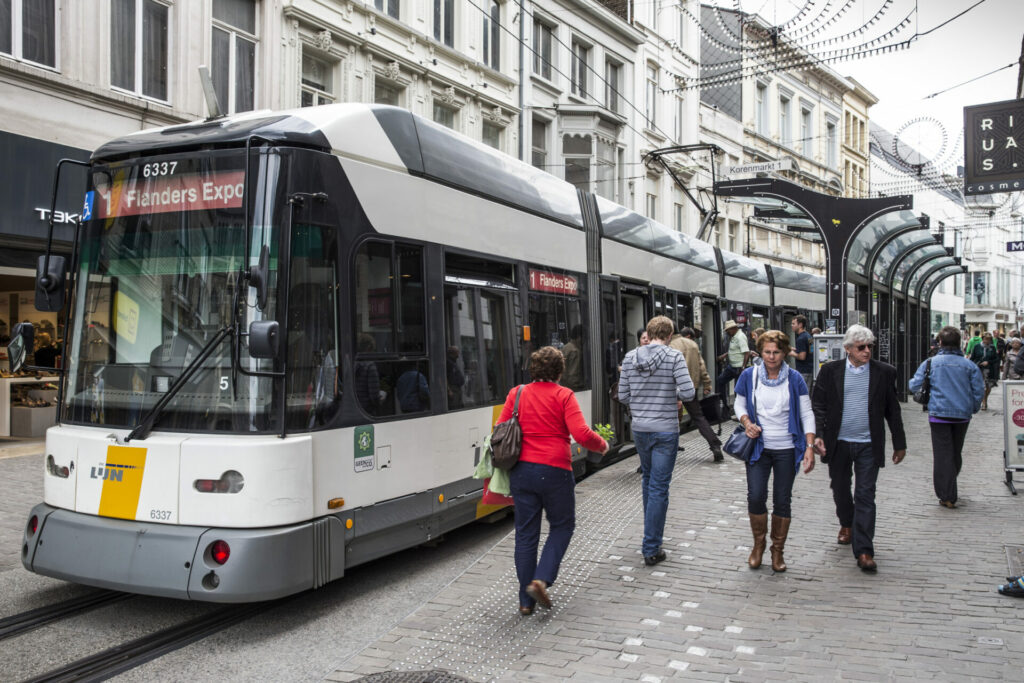Ghent has some of the highest tram accident figures in the world, mostly involving cyclists. The Flemish city is now looking to structurally improve conditions around tracks to lower this figure, but its efforts may be in vain.
The city has been taking measures to reduce the estimated 500 cycling accidents that take place every year, however, the death of a 35-year-old cyclist who fell on tram tracks last year has spurred Ghent to up its efforts.
In the coming months, the ideal bicycle lane across the tracks will be marked on the ground at dangerous crossing points to ensure cyclists cross them sharply enough, which is one of the numerous hazardous features, and can result in them being thrown from their bicycles.
With this solution, the road markings — a series of arrows with the ">" symbol — should ensure there are fewer falls, Filip Watteeuw (Green), the city's councillor for mobility, told VRT NWS. "We will make work of it in the coming weeks and months, in all places where it is needed," he said.
Ghent is also removing bollards and other "vertical objects" to avoid possible accidents and falls.
A joint effort, but problem remains complex
Flemish public transport company De Lijn, which operates the trams in the city, has been made aware of the initiative, of which recommendations came from a study by Tractebel, in which it also participated. "However, its implementation is up to the city," the company's spokesperson, Karen Van der Sype, told the Brussels Times.
De Lijn itself has also been trying to find a fix and is collaborating with the City of Ghent to identify so-called "pain points" in the tram infrastructure as well as with other tram companies to exchange expertise and possible solutions.
At the Gentbrugge depot, there was recently a test with a rubber filling with cautiously positive results. Additional research is needed to roll out that project more widely, however, Van der Sype confirmed that analysis of this trial is still in progress. "Other solutions are also still in the pipeline."
Related News
- Most cycling fatalities in ten years as accidents rise nationwide
- Woman dies after being hit by tram in Ixelles
- 'Long-awaited': New tramline will connect Rogier with northern Brussels
However, despite the clear need to improve safety for these vulnerable road users, the problem is complex, and an ideal solution still seems far off and perhaps impossible, Stef Willems, Vias' Road safety spokesperson, told The Brussels Times earlier this year.
De Lijn itself sought to temper expectations by pointing to the wealth of research already carried out on the topic, without a universal "miracle" solution being found.

